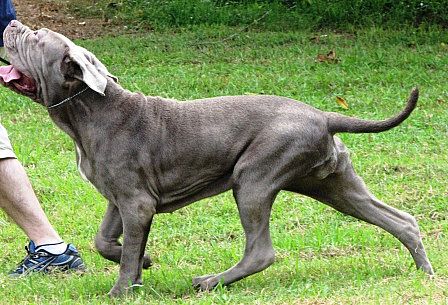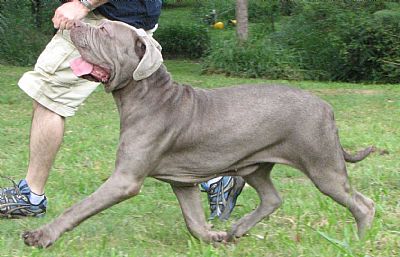Copyright © 2001-2015 Wild Child Neapolitan Mastiff Kennel. All Rights Reserved.
All content is protected under US copyright laws, no part of this site or its contents may be reproduced without permission. That includes linking to photos, downloading photos and using them for your own purposes, and posting photos for people to view. For questions or comments regarding this site please email Webmaster
All content is protected under US copyright laws, no part of this site or its contents may be reproduced without permission. That includes linking to photos, downloading photos and using them for your own purposes, and posting photos for people to view. For questions or comments regarding this site please email Webmaster
E-mail: mastinaro@yandex.com
Wild Child
Neapolitan Mastiff
Health Issues page
Neapolitan Mastiff
Health Issues page
Some useful info you might need to know
BONES and JOINTS Being a giant breed, Neapolitans can suffer from the usual joint and bone ailments such as:
Panosteitis Usually seen between 6-18 months of age, but they can be older. It causes a 'shifting lameness' from one leg to another, sometimes more than one leg affected at once. Can last up to 9-12 months. Pain relief and cage rest with restricted exercise with cure this condition.
Hygroma Usually seen on the elbow joints, this fluid swelling can occur due to sleeping on hard surfaces, but more often than not, can just arise with no reason. Hygromas cause no lasting health issues, but are unsightly. I personally have tried a number of treatments ranging from draining and pressure bandaging, but have found that unless they are a show dog, the best course of action is to leave them to resolve on their own.
Osteochondrosis Lameness is usually seen between 6-9 months of age.
Panosteitis Usually seen between 6-18 months of age, but they can be older. It causes a 'shifting lameness' from one leg to another, sometimes more than one leg affected at once. Can last up to 9-12 months. Pain relief and cage rest with restricted exercise with cure this condition.
Hygroma Usually seen on the elbow joints, this fluid swelling can occur due to sleeping on hard surfaces, but more often than not, can just arise with no reason. Hygromas cause no lasting health issues, but are unsightly. I personally have tried a number of treatments ranging from draining and pressure bandaging, but have found that unless they are a show dog, the best course of action is to leave them to resolve on their own.
Osteochondrosis Lameness is usually seen between 6-9 months of age.
Affects the cartilage within the joint, causing inflammation and pain. It can lead to Osteochondritis dissecans (OCD) if a small piece of cartilage dies and either flaps back or dislodges, becoming a fragment within the joint. Usually affectes the large joints, ie shoulder, elbow, stifle and hock.
Hypertrophic Osteodystrophy Usually seen at 3-4 months of age. Can cause mild to severe lameness and may recover with no treatment. In mild cases, it causes swellings around the joints, but in severe cases, it can cause bowing of the legs, weight loss, not eating and diarrhoea. The cause is unknown, but may be oversupplementation, overnutrition or lack of vitamin C.
Hip and Elbow dysplasia Common in giant breeds and usually a congenital trait from the parents or grandparents. It can cause mild to severe lameness and pain.
Elbow dysplasia can be corrected surgically with little difficulty, but hip dysplasia correction is more involved and can be costly.
Hypertrophic Osteodystrophy Usually seen at 3-4 months of age. Can cause mild to severe lameness and may recover with no treatment. In mild cases, it causes swellings around the joints, but in severe cases, it can cause bowing of the legs, weight loss, not eating and diarrhoea. The cause is unknown, but may be oversupplementation, overnutrition or lack of vitamin C.
Hip and Elbow dysplasia Common in giant breeds and usually a congenital trait from the parents or grandparents. It can cause mild to severe lameness and pain.
Elbow dysplasia can be corrected surgically with little difficulty, but hip dysplasia correction is more involved and can be costly.
OCD lesion in the shoulder joint
Diagrams of normal and dysplastic hips
There are many more conditions that affect the growing bones and joints of large and giant breeds, but these are the most common issues seen. An easy way to assess hip & elbow function in adult dogs is by watching them at a trot.
Dogs should exhibit 'economical movement' with both Reach, where the leg moves as far forward as possible, and Drive,
where
the leg moves as far back as possible. Dogs with a shortened gait in either front or back (or both) can have joint problems in the affected limbs. Whilst a 'proppy' or shortened gait is not a definite indicator of joint dysplasia, it will, given time, wear the joint excessively, as it is an abnormal gait.
Dogs should exhibit 'economical movement' with both Reach, where the leg moves as far forward as possible, and Drive,
where
the leg moves as far back as possible. Dogs with a shortened gait in either front or back (or both) can have joint problems in the affected limbs. Whilst a 'proppy' or shortened gait is not a definite indicator of joint dysplasia, it will, given time, wear the joint excessively, as it is an abnormal gait.
'Drive' - note the extension of the hindlimb
'Reach' - note the extension of the forelimb, including the shoulder!
The information on this page was written by our dear friend Dr. Rebekah Day - the Veterinarian, Neapolitan Mastiff Breeder in Australia, the Owner of The Peritas Kennels




